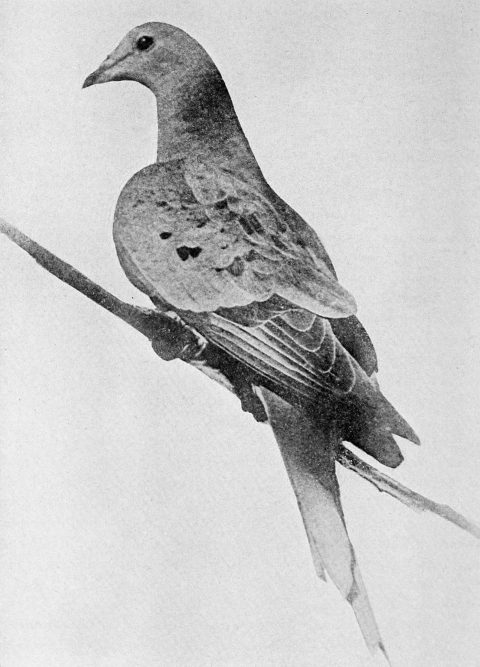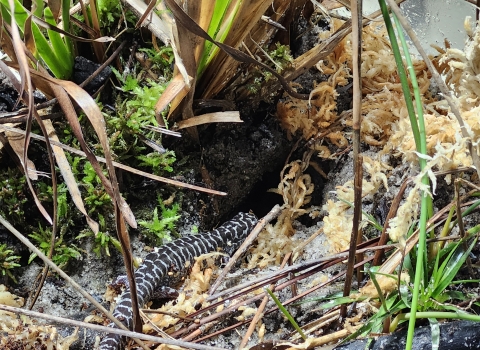Once the most abundant bird in North America, the passenger pigeon was hunted to extinction in the early 1900s. The last of its kind, named Martha, died in captivity on September 1, 1914. A century later, her story serves as a somber remembrance of what our nation has lost.
The passenger pigeon (Ectopistes migratorius), once numbering in the billions, was thought by some to account for one quarter of all land birds in North America. Such astonishing numbers are hard to imagine today. The birds aggregated in flocks comprising hundreds of millions of individuals. Eyewitnesses described migrating flocks that stretched a mile wide, darkening the sky for days with their grayish-brown bodies as they flew overhead. The sound of millions of wings beating in unison was said to be deafening, as loud as a freight train passing overhead. The down draft of their wings would cool the air below. The renowned painter and naturalist, John James Audubon, recorded a pigeon flight along the Ohio River in 1813 that eclipsed the sun for three days.
When the birds finally arrived at their destinations, they would take over entire forests. Roosting in such large numbers, they would destroy the trees on which they gathered. Observers reported that the sheer weight of so many birds would cause the trees to bend until their tops touched the ground, their branches snapping off, and their trunks uprooting. The devastation was likened to a tornado or hurricane blowing through the forest.
The species was hunted in overwhelming numbers because the birds could be shot or netted in such huge numbers to satisfy the demand for their tasty meat. The deforestation of land destroyed its habitat, and infectious diseases spread through the colonies. A gregarious species, the passenger pigeon could not survive when the flocks began to dwindle, and within a generation or two, the species had vanished. It is unfathomable how such an abundant species could be driven to extinction within such a short timeframe. Another species lost. A new normal established. Future generations would only know this bird through historical accounts.
The passenger pigeon's plight is not unique. Nearly a half-century earlier, the great auk (Pinguinus impennis), a flightless seabird known to North Atlantic shores, was lost. The Carolina parakeet (Conuropsis carolinensis) no longer travelled in noisy flocks from southern New York and Wisconsin to the Gulf of Mexico after 1918. And by 1932, the heath hen (Tympanuchus cupido cupido) disappeared from its open prairie habitat in the Northeast. These once common species began to steadily decline in the 1600s as a result of over-hunting, habitat loss, and introduced predators. Each event testament to the fact that even the most abundant species can be rendered extinct.
These cautionary tales inspired reflection on the relationship of humans and nature, and led to a groundswell of public awareness of environmental problems and support for wildlife conservation. This was the start of the country's first environmental movement. The result was the regulation of hunting, the establishment of refuges and preserves, and the passage of conservation laws. Several years later, Congress passed the Endangered Species Act of 1973, which was to become the most important wildlife conservation law of our time and the primary means for federal agencies to protect imperiled species and their habitats. While contemporary conservation measures arrived too late to save the passenger pigeon and other species, this crucial law has kept hundreds of plants and animals from realizing this fate.
In the last 40 years, the Endangered Species Act has proved to be a remarkably successful tool for preventing extinction and steadily improving the conservation prospects for numerous dwindling species. Although significant progress has been made in safeguarding our nation's imperiled species, many still face formidable challenges to recovery. Many species continue to hang on by just the thread ESA protection provides them. And while some species with precariously low numbers may never recover to the point where ESA protection is no longer necessary for their survival, the status of many species has improved or stabilized. In the 40th year of its existence, the ESA is stronger than ever. It continues to represent an unwavering commitment to protect our native plants and animals for future generations.



